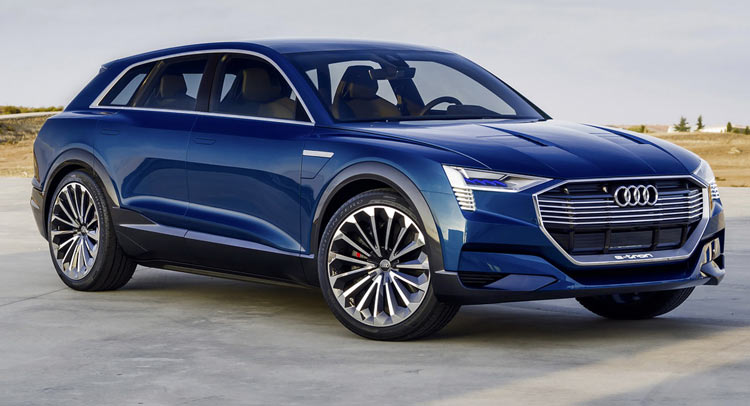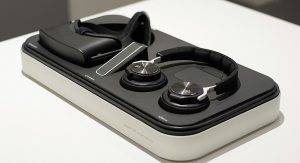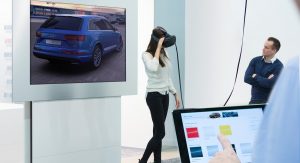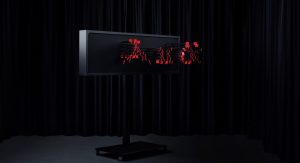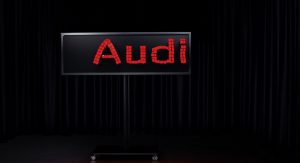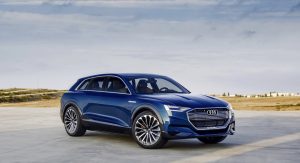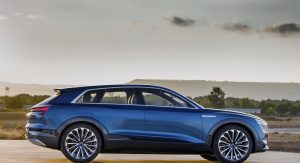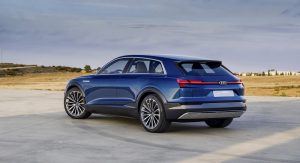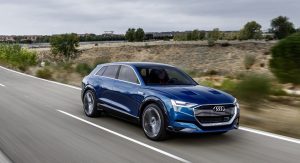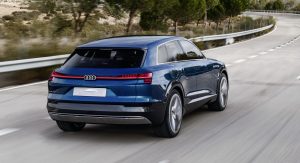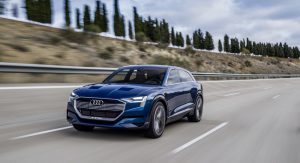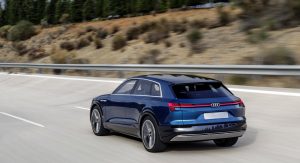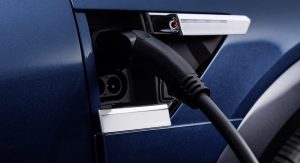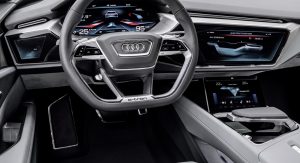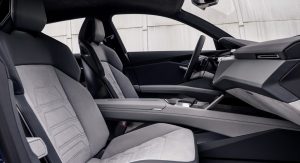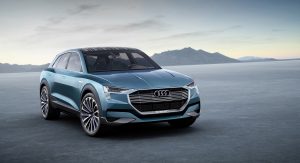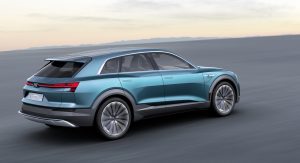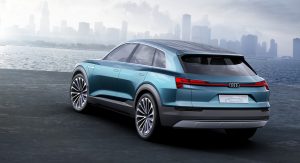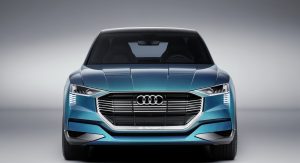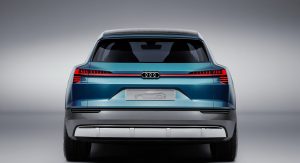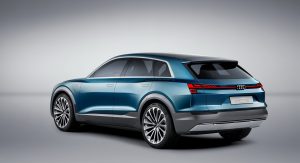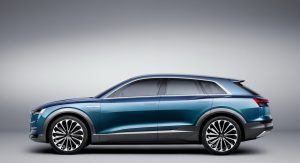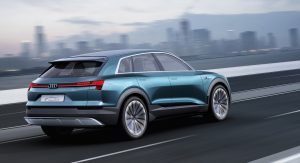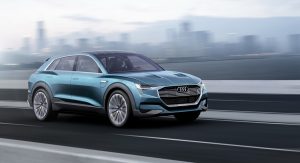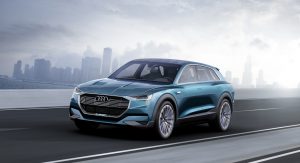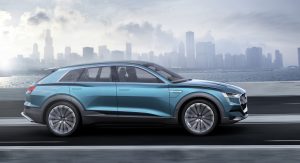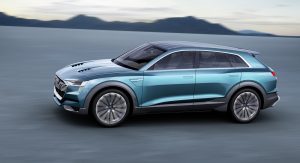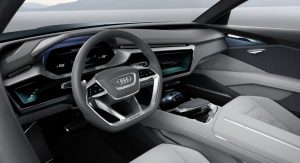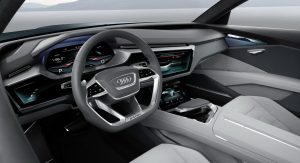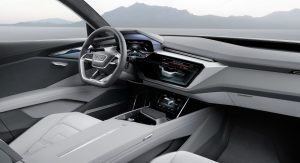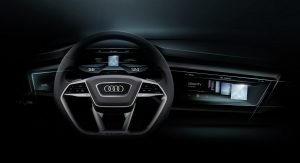Audi has presented a number of technology innovations at the 2016 Consumer Electronics Show, along with the e-tron Quattro concept car in a new dark blue shade.
The one-off vehicle was originally displayed at the 2015 Frankfurt Motor Show, and now it arrived in Las Vegas, with its curved OLED (Organic Light Emitting Diodes) of the virtual cockpit, two displays fpr the MMI on the center console with a new type of touch recognition and voice control and a 12.3-inch TFT display digital instrument cluster.
Behind the new Audi display concept is the newest Modular Infotainment Platform (MIB2+), prepared for the latest mobile communications standard, the LTE Advanced, which can download data into the car at a maximum speed of 300Mbit/s.
Other goodies mentioned by the four-ring brand include the LTE/UMTS module, which connects to the internet with download speeds of up to 100Mbit/s, an integrated Wi-Fi hotspot, customized services such as Google Earth, Google Street View, traffic information, parking information, fuel prices, train, flight and gate information, along with City Events.
Emergency Call Alerts are not a novelty anymore, but Audi still mentions them. The Audi Service Request allows customers to schedule a service appointment and the MMI Connect app brings more services that include the Online Media Streaming, which offers access to Napster, Rhapsody and Aupeo!.
Smartphone usage allows drivers to lock or unlock the doors, to operate the auxiliary heating or to view the status report. They can also have the parking location and the parking time displayed, while the e-tron models get the remote control of battery charging, access to driving data and climate control too. These functions can be activated by a smartwatch as well.
Audi Connect SIM is a permanently installed embedded SIM (e-SIM), which will be available in just a few months on the new A4 and Q7, on the European markets. This brings the connect services into the car doesn’t require any activation procedure. It allows EU-wide roaming and, regardless of which services are integrated, owners can choose additional data packages.
The connect lineup will be furthermore expanded, with the Car-to-X technologies, with hazard and traffic sign info, which report detected speed limits and hazardous locations to a server in the cloud via the mobile phone network. The data is then processed and provided to other Audi drivers with suitable equipment.
A usable feature is the traffic light information, which connects the new models in the USA, using the mobile phone network, to a central traffic computer that controls traffic lights around the city and recommends a speed to the driver for reaching the next traffic light when this will be green.
The Audi e-tron Quattro concept has piloted driving technologies, which include driving in traffic jams and piloted parking, promising improved safety, time savings, comfort, efficiency and convenience.
Since it’s all about the future, the vehicle is also electrified, as its name suggests, and power comes from three electric motors, with a total output of 496hp (503PS), sent to the Quattro all-wheel drive system. The 95kWh battery is located between the axles and it’s not affecting the vehicle’s center of gravity. The total range of the one-off, which will transform into a production model in 2018, is just over 311miles (500km).
OLED is mentioned once again, in the taillamps this time, along with the matrix laser technology, which will soon be introduced in production vehicles.
Since CES is mostly about technology, Audi also presented the Virtual Reality experience, a world’s first for an automaker. It allows customers to experience the car of their choice at a dealership, in 3D, with a 360-degree panoramic view, with sound effects and all available features.
Last but not least, the Audi Fit Driver project helps “drivers step out of their cars at their destinations more relaxed than when they stepped into them“. This includes a wearable fitness wristband or watch, which monitors vital parameters like the heart rate and skin temperature, supplemented with info on breathing rate, driving style and weather or traffic information.
By analyzing the data, the vehicle can deduce the driver’s current state, whether he / she is overly tired or stressed, and adjust the modes of operation to relax, vitalize and even protect. This technology will incorporate the driver assistance, safety systems, piloted driving systems and piloted emergency stops with emergency calling.
Audi tells technology lovers that the “usual strict regulations by Audi apply“, when it comes to data protection.



